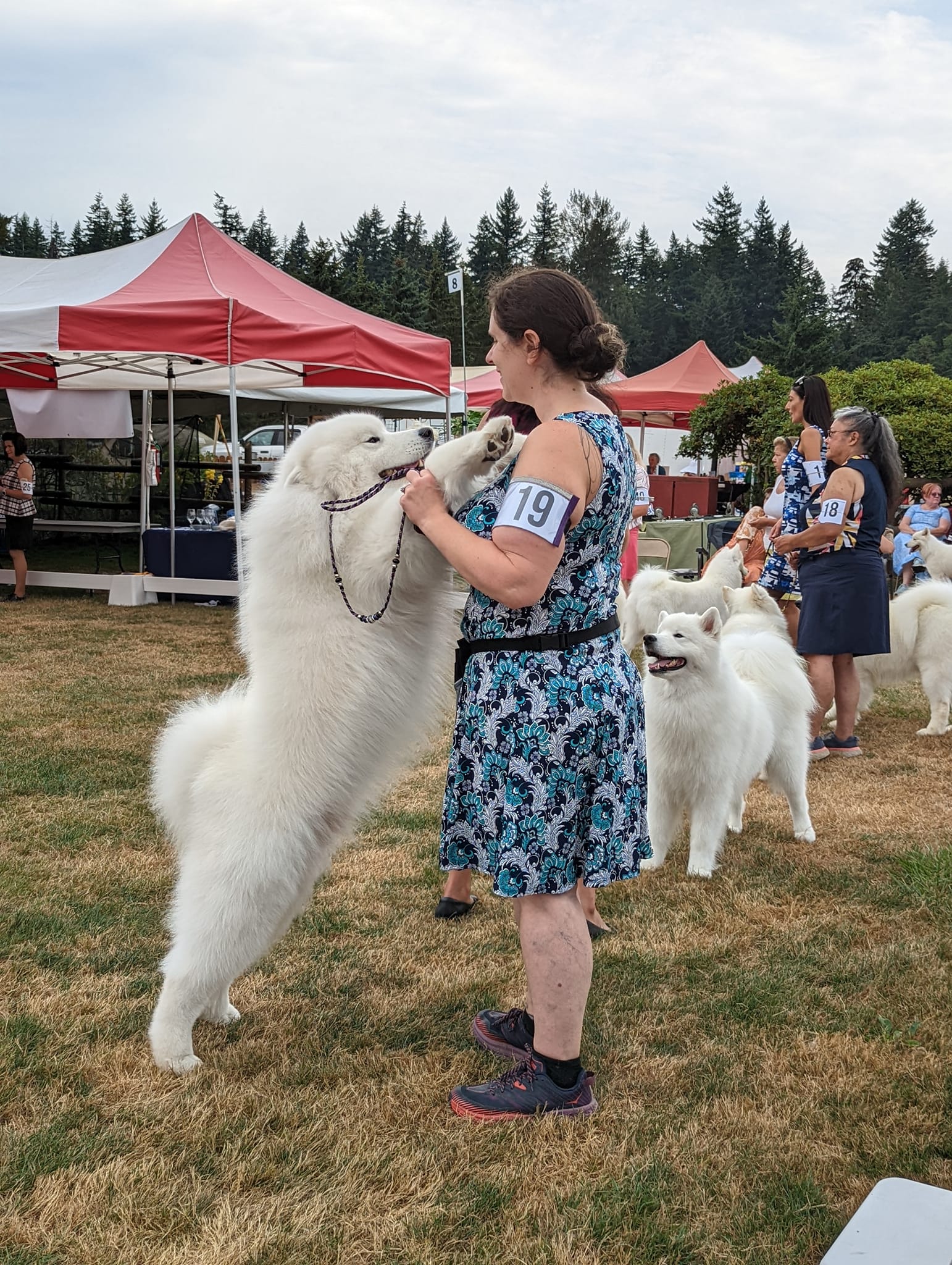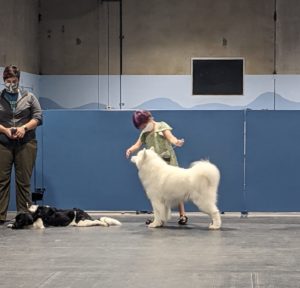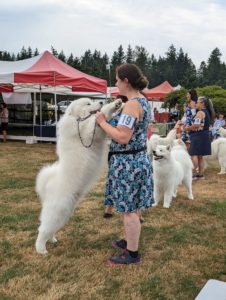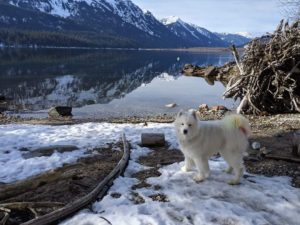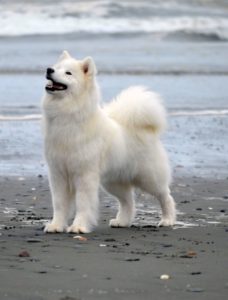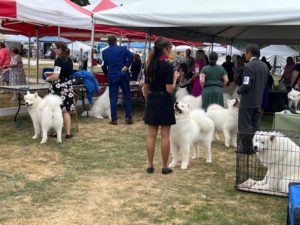Working Dogs
Working Dogs: Canine companions are Jacks-of-all-trades and masters of many
By: Norma Bennett Woolf
Introduction
Although many people consider the dog’s highest calling to be guardian and companion of home and hearth, the dog himself may have other ideas. While many dogs enjoy the luxury of family life, some dogs that don’t have a job – a purpose that meets their physical and mental needs – may become hyperactive, destructive, or difficult to handle.
Man has risen to the occasion, inventing all sorts of canine careers. For perhaps thousands of years dogs, he has trained dogs to hunt birds, pests, and small and large game; herd sheep, cattle, reindeer, and geese; pull carts and sleds; guard castles, forest preserves, homes, and families; rescue drowning sailors; and haul fishing nets.
In the past 50 years, man has invented new jobs for his canine companion; today dogs also sniff out fugitives, victims, runaways, contraband, and crimes; help blind, deaf, or wheelchair-bound owners; do circus tricks; visit nursing homes and hospitals; act in movies and on television; and compete in tests of skill.
What man provided, dogs seem to embrace, for few animals are happier than a working dog in his element.
The recipe for a working dog
How did man determine which dogs were suited for which jobs? He studied the dogs, used some common sense and genetic selection, sometimes crossed this breed or mix with that breed or mix and kept at it until the result was right. And he passed his dog knowledge and his breeding records to the next generation of hunters, herdsmen, fishermen, farmers, and tradesmen so that the breeds could be further refined and conserved as workers and companions.
As a result, a prospective duck hunter seeking a retriever needn’t start from scratch, testing out every breed or mix that comes his way; he can go directly to the group known as sporting dogs or gundogs and make his selection from the specialists or the all-rounders. The initial work has also been done for a weaver who runs a small flock of colored sheep, a farmer storing feed grain in his barn, a flock-owner in wolf territory, a recreational musher, a rabbit hunter, and a pet owner with an interest in any of the characteristics of the herding, guarding, terrier, working, or hound dogs; what remains is to find just the right breed to match the lifestyle and personality of the owner.
Purebred histories
Pure breeds were developed by purposeful crossbreeding to incorporate and fix specific traits, so some dogs have characteristics that fit two or more groups. And some dogs have been assigned to a group based on an erroneous translation of the breed name in the country of origin or on misidentification by the travelers who brought the dogs to the attention of the Western World. These mistakes are of academic and practical interest to dog fanciers and can be of the utmost importance to those who are looking for a family pet or a working dog.
For example, the Dachshund shares many characteristics with terriers, yet AKC placed it in the hound group, perhaps as much because of a misinterpretation of the breed’s German name as its scenting ability. In German, hund means dog; the Dachshund is a “badger dog” that, like the terriers, chased its quarry to ground in dens or rock crevices.
Chris Walkowicz describes the breed in The Perfect Match : A Dog Buyer’s Guide: “Dachsies are as much terriers as hounds, feisty, scrappy, and able to go to ground after vermin, including the tough badger. … Tracking ability, however, is all scenthound.”
AKC recognizes the Dachshund’s terrier heritage by allowing it to compete in terrier go-to-ground tests and trials. Pet buyers should beware when selecting a Dachshund, for those expecting a docile hound personality may well find themselves with a hole-digging, perpetually inquisitive pet that tries their patience and their training ability.
Pinscher is German for terrier, so perhaps the various pinscher dogs should be in the terrier group as well – at least when personality is considered. The Doberman Pinscher and the Miniature Pinscher both developed in part from the German Pinscher, and the Affenpinscher (Monkey-terrier in German) was a vermin dog on German farms and was used to develop the Miniature Schnauzer.
Because few breeds developed out of whole cloth and most breeds were produced in relative isolation by experimenting with crosses, back-crosses, and out-crosses, breed histories are replete with suppositions and speculations. In addition, since many breeds were created for more than one purpose, any categorization – while useful – is less than perfect. For example, Samoyeds and Rottweilers are members of the AKC working group for their draft work (Sams) and guarding ability (Rotts), but the Rottie (like the Old English Sheepdog) was developed as a cattle-driving dog and the Sammy herded reindeer in his Siberian homeland. AKC recognizes the herding background of both breeds by allowing them to compete in events with other herding breeds.
The Akita and his cousin the Shiba Inu both started life as hunting dogs in Japan – a heritage manifest today in the tendency of both breeds to hunt small game and the neighbor’s cat, but the Akita is part of the working group and the Shiba is a non-sporting dog.
Some breeds are as single-minded today as the day they were born. Beagles follow their noses to the exclusion of everything else but food; Border Collies live to herd (and if there’s no livestock available, kids, cars, and other dogs will do); terriers love to dig; the Komondor is the consummate guardian; and the Siberian Husky, the sighthounds, and many of the sporting breeds like nothing better than a day of explorations, preferably at full gallop. Like most breeds, however, they are willing to give up their previous careers for work better-suited to modern civilization.
New jobs
Most dogs today are pets. Some also have other jobs, including the traditional herding, guarding, hunting, retrieving, hauling, or rescuing. Some have new jobs such as sniffing for accelerants in burned out buildings or smuggled goods in an airport, alerting deaf owners to a crying baby or a smoke alarm, or snuggling up to a lonely resident in a hospital ward or nursing home. Dogs are happy to work with their humans in almost any endeavor from life-and-death search and rescue to competitions in obedience or agility.
Many breeds prove their versatility over and over. German Shepherd Dogs are sheepherders, soldiers, police officers, aides to handicapped owners, property guardians, and top-notch search and rescue workers. Golden Retrievers help handicapped owners, retrieve shot birds, and visit hospitals and nursing homes. Belgian Malinois join GSDs as capable herders, police officers, and search and rescue specialists. Airedales are hunters, soldiers, and police officers. Newfoundlands pull carts, rescue lost hikers, and comfort sad and lonely people. Rottweilers work with police departments, pull carts, and join search and rescue squads.
Whatever the job, training starts before the puppy is born. The natural skills and intelligence of the parents are generally passed to at least some of the offspring, so the best breeders take care in matching sire and dam not only for their beauty, structure, and health, but for their brains and abilities.
Copyright 2003 by Canis Major Publications. All rights reserved. Used by permission.


